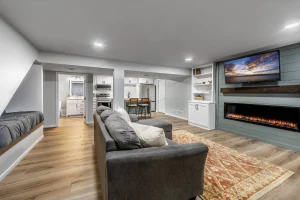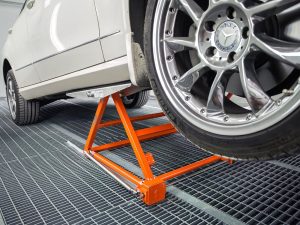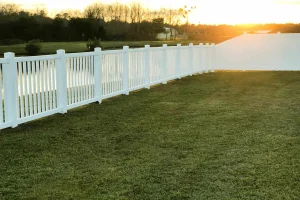Choose a Fence Contractor Chicagoland Homeowners Can Trust

Hiring for a new fence should feel like an upgrade, not a gamble. The best contractors bring clarity on materials, timelines, and workmanship, while also tailoring recommendations to the realities of Chicago’s climate and neighborhood regulations. Whether you’re leaning toward a classic Cedar Rustic Fence or a modern composite, the right partner explains trade-offs in cost, durability, and maintenance without pressure. In the sections below, you’ll learn how to verify experience, read estimates with confidence, and confirm quality through local references. You’ll also see how to navigate licensing and warranties, so the structure around your property remains strong, attractive, and compliant for years to come. If you’re ready to Choose A Fence Contractor Chicagoland can rely on, the guidance here will help you make an informed, low-stress decision.
Evaluating Contractor Experience and Project History
A strong project history is more than a photo gallery—it’s proof a team can manage site challenges, municipal requirements, and changing weather. Look for contractors who can explain why they chose specific post depths, fasteners, and finishes for similar homes in your neighborhood. Ask how they handle scheduling around utility locates and permits, and whether they self-perform crews or rely mostly on subcontractors. You’ll also want to understand their communication style: who your daily point of contact is, how change orders are documented, and how issues get escalated. When you Choose A Fence Contractor Chicagoland residents recommend, you’re selecting a partner with systems that prevent small obstacles from becoming costly delays.
What a credible record looks like
A credible record includes projects like yours—corner lots with tight setbacks, properties near alleys, or yards with sloping grades—and it should show successful outcomes. Request before-and-after photos, not just polished final shots, so you can see how posts were set, concrete was finished, and gates were aligned. Good contractors can discuss projects where adjustments were needed and what they learned from them, such as swapping latch types for better winter performance. They should also provide addresses you can drive by to see aging fences in real conditions, not just new installations. The more specifically a contractor can connect their past work to your site’s particulars, the more confidence you can have that their crew will deliver consistent results.
Matching Fence Designs to Chicagoland Weather Needs
Chicagoland brings lake-effect winds, freeze–thaw cycles, and heavy spring rains—conditions that test every post, plank, and fastener. A fence designed for this environment uses proper post depth below frost line, drainage that prevents heaving, and hardware that resists corrosion from moisture and de-icing salts. Materials should be chosen for dimensional stability, so boards don’t cup, twist, or crack after a harsh winter. The contractor should also evaluate wind exposure on your property and recommend panel spacing or reinforcement that balances privacy with airflow. These details aren’t luxuries; they’re essentials that determine whether your fence looks true and stands straight after multiple seasons.
Practical design adaptations that last
Design adaptations can be subtle yet powerful—slightly gapped pickets to relieve wind load, gravel under posts to promote drainage, and sealed end-grain to minimize water uptake. In high-traffic alleys or areas where plows pass close, reinforced corners and heavier-gauge hinges protect gates from misalignment over time. For yards with clay-heavy soil, a contractor may recommend larger concrete footings or bell-shaped bases to resist frost lift. Thoughtful pros also plan gate swings to avoid snow accumulation zones and specify latches that remain operable with gloves. These choices reflect experience, and they’re part of why it pays to Choose A Fence Contractor Chicagoland homeowners trust to design for local stressors, not just looks.
Why Licensing, Insurance, and Warranties Matter
Licensing signals that a contractor knows local codes, setbacks, and permitting rules, which differ from one suburb to another. Without proper licensing, your project can be delayed or halted, and you might face fines or be forced to redo work. Insurance is equally critical: general liability protects your property, and workers’ compensation protects you if a crew member is injured on-site. Ask for certificates of insurance sent directly from the insurer and verify current coverage dates and policy limits. Finally, understand how warranties work—materials and labor are often covered separately, and the best contractors back both with clear, written terms.
The protection you need in writing
Insist on permit handling in the contract, with the contractor named as responsible party, so inspections align with current municipal standards. Clarify what voids the warranty—for example, hanging heavy planters on fence rails or neglecting recommended maintenance. A strong labor warranty should detail response times, especially for issues like gate sag or latch misalignment that tend to surface early. Material warranties should be specific about color fade, rot, rust, or manufacturing defects, and whether proration applies. When these protections are documented, you gain the assurance that any problem will be addressed without finger-pointing or surprise costs.
Material Options That Improve Longevity and Style
Material choice shapes how your fence weathers over time and how much upkeep you’ll need to budget. Cedar offers a warm, organic look and naturally resists decay, while treated pine is budget-friendly but benefits from careful finishing and regular sealing. Vinyl provides low maintenance and uniform color, though it may be less forgiving in extreme cold if installed improperly. Aluminum and steel excel for durability and minimal upkeep, with powder-coated finishes that resist chipping and corrosion. A skilled contractor will map each option to your goals for privacy, aesthetics, and maintenance, then tailor hardware and finishes to maximize service life.
Pairing materials with performance goals
If you want timeless curb appeal and a comfortable backdrop for landscaping, a Cedar Rustic Fence can deliver warmth without feeling heavy. For families prioritizing low maintenance, high-quality vinyl or aluminum panels with stainless fasteners can reduce seasonal chores. Where security is paramount, steel frames for gates and strategic use of thicker posts at corners prevent sagging and sway. Composite options blend wood fibers and plastics for color stability, but they require pro-grade fastening systems to avoid expansion-related issues. Whatever you choose, make sure the estimate details fastener type, post depth, and finish schedule so the material’s strengths aren’t undermined by shortcuts.
Reading Estimates Clearly to Avoid Hidden Costs
Transparent estimates protect both your budget and your timeline. A clear proposal itemizes materials by type and grade, lists fasteners and hardware, and describes post depths and concrete specifications. It should also outline site prep: utility locates, brush clearing, haul-away of old fencing, and disposal fees. Exclusions deserve equal attention, covering rock excavation, irrigation repairs, or stump removal that might affect your yard. The best estimates educate as they inform, making it easier to compare bids on an apples-to-apples basis and Choose A Fence Contractor Chicagoland residents can hold accountable.
What complete proposals include
Look for explicit line items on permits, inspections, and who schedules each step, along with an expected timeline with a buffer for weather. Payment schedules should be milestone-based—deposit, material delivery, substantial completion—rather than heavy upfront demands. Change order procedures must be written, detailing how pricing is approved before additional work starts. Warranties, maintenance recommendations, and a punch-list process should be included so there’s no ambiguity at closeout. When these elements appear in black and white, you’ll minimize surprise charges and keep the project moving smoothly even if conditions shift.
Verifying Quality Through Local References and Reviews
References from nearby neighborhoods reveal how a fence holds up after a few winters and how a contractor handles follow-up. Ask for recent installs and older projects so you can see if gates still swing cleanly and panels haven’t racked. Talk to past clients about cleanup habits, respect for property lines, and how promptly warranty issues were addressed. Online reviews add context, but look for patterns rather than single outliers, paying attention to how the company responds to concerns. A consistent track record of communication and craftsmanship is a strong predictor of your own experience.
Making feedback work for you
When you reach out to references, ask specific, time-bound questions: how the crew protected landscaping, whether the schedule matched the proposal, and how the fence performed during storms. It’s helpful to verify that the final invoice matched the estimate aside from pre-approved change orders. If you can, view installations at different times of day to assess privacy, shade, and sightlines from the street. Combine this feedback with photos provided by the contractor to confirm they’re not cherry-picking angles or only showing brand-new work. The goal is to see real-world durability and service practices, not just polished marketing.
How the Right Contractor Ensures Long-Term Satisfaction
A fence that continues to look straight, function reliably, and match your property’s style doesn’t happen by accident. It comes from deliberate planning, experienced installation, and a service mindset that extends beyond the last day on-site. The right contractor sets expectations about seasonal movement, offers guidance on cleaning and sealing, and checks back after the first deep freeze. They also design with future updates in mind, such as adding a second gate or extending fencing for new plantings or pets. This combination of foresight and responsiveness saves you money and keeps the fence aligned with how you actually live.
Service that continues after installation
After installation, top pros schedule a short-term follow-up to verify gate alignment and fastener tightness, which can shift slightly as materials settle. They share a simple care routine: how to rinse road salt, when to re-seal wood, and how to adjust latches as temperatures swing. If you chose a Cedar Rustic Fence for its warmth and character, they’ll outline a finish plan that preserves color while allowing the wood to breathe. They’ll also document warranty contacts, part numbers for hardware, and recommended replacement intervals for hinges or latches. In the long run, this kind of stewardship—paired with your effort to Choose A Fence Contractor Chicagoland aligns with—translates into stronger performance, quieter maintenance seasons, and a fence that continues to elevate your home’s curb appeal year after year.





